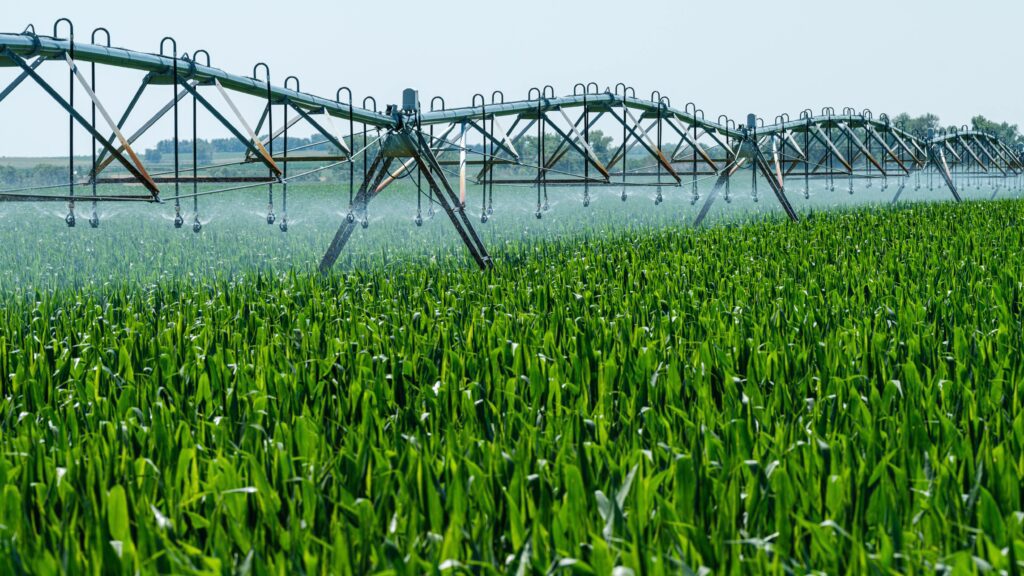Enhance Agricultural Productivity With High-Quality Water Soluble Polymers
These polymers offer a variety of benefits that can reinvent conventional farming approaches, from boosting water retention and performance to optimizing dirt framework and nutrient delivery systems. By using the power of innovative polymer remedies, farmers can potentially unlock brand-new paths towards accomplishing greater plant yields while minimizing environmental effects.

Benefits of Water-Soluble Polymers
Water-soluble polymers supply a wide variety of advantages in farming applications due to their boosted water retention residential properties and capability to enhance soil framework. Agriculture. These polymers, when included in the dirt, can considerably raise water holding capacity, minimizing the regularity of irrigation needed by plants. By developing a gel-like material when combined with water, water-soluble polymers develop a reservoir that slowly releases dampness to plant origins, guaranteeing a much more regular water during completely dry spells
In addition, these polymers aid in avoiding soil erosion by binding dirt particles with each other, thereby improving soil structure and stability. Enhanced dirt framework permits for much better origin infiltration and oygenation, advertising much healthier plant development and higher crop yields. Water-soluble polymers also aid in nutrient retention by reducing leaching, guaranteeing that crucial nutrients continue to be available to plants for a longer duration.
Improved Water Retention and Effectiveness
Enhancing agricultural water retention and performance via the consolidation of sophisticated polymer modern technologies has actually ended up being a vital emphasis in modern-day farming techniques. Water-soluble polymers play an essential role in improving dirt framework, improving water infiltration, and reducing water evaporation rates. By forming a thin movie on the soil surface, these polymers assist to avoid water overflow and increase the soil's water-holding capacity, ensuring that plants have access to an adequate water system.
In addition, making use of top notch water-soluble polymers can substantially decrease the frequency of irrigation, as they boost the soil's capacity to keep dampness for longer periods. This not just saves water but also lowers the energy and labor prices connected with irrigation techniques. Furthermore, improved water retention and effectiveness result in far better nutrient uptake by plants, bring about enhanced plant yields and general agricultural performance.
Enhanced Nutrient Shipment Equipment
Given the substantial effect of high-quality water-soluble polymers on improving water retention and effectiveness in agriculture, the focus now moves in the direction of optimizing nutrient distribution systems to further enhance crop growth and yield. Enhanced nutrient delivery systems play an important function in guaranteeing that plants receive the necessary nutrients in a kind that is readily available for uptake, promoting their overall health and productivity. By including water-soluble polymers into nutrient shipment systems, the efficiency of nutrient uptake by plants can be substantially boosted.
One trick advantage of utilizing top quality water-soluble polymers in nutrient shipment systems is their capability to control the launch of nutrients, guaranteeing a regulated and steady supply to plants over a prolonged period (Agriculture). This controlled release mechanism assists protect against nutrient leaching and drainage, therefore making best use of vitamins and mineral use by plants and minimizing environmental influence

Dirt Structure Optimization Techniques
Optimizing dirt framework is vital in contemporary agriculture for maximizing crop yields and advertising sustainable land management techniques. Soil framework optimization strategies play a crucial role in making certain that dirt gives an excellent setting for plant growth. One vital method is the enhancement of organic issue, such as compost or manure, which aids enhance dirt structure by boosting its water-holding capacity and nutrient retention.
Moreover, exercising minimal tillage or no-till farming can avoid soil compaction and promote the advancement of a healthy and balanced dirt framework. Cover chopping is an additional reliable strategy that involves planting plants specifically to safeguard and enhance the soil, stopping disintegration and improving dirt structure.
Additionally, applying plant turning approaches can aid damage insect and disease cycles, while likewise enhancing dirt framework via the differing root structures of different crops. Generally, employing these soil framework optimization techniques can result in boosted farming performance, lowered ecological influence, and lasting sustainability in farming official site techniques.
Lasting Solutions for Plant Returns

To resolve the difficulties of taking full advantage of crop returns while promoting sustainable land monitoring methods, discovering sustainable remedies becomes imperative in modern-day agriculture. One sustainable remedy for enhancing plant yields is the use of accuracy farming techniques.
In addition, promoting crop turning and cover chopping can help preserve dirt wellness, minimize disintegration, and enhance nutrient cycling, inevitably contributing to higher yields with time. Integrated pest administration approaches also play a crucial duty in lasting plant production by reducing the reliance on chemical pesticides and advertising all-natural bug control methods.
Additionally, investing in research study and technology for developing drought-resistant crop varieties and climate-resilient farming techniques can assist minimize the impact of environment change on farming while making sure consistent yields in the face of environmental challenges. By embracing these lasting options, farmers can accomplish higher crop yields while safeguarding the a knockout post health of the land for future generations.
Conclusion
Finally, making use of premium water-soluble polymers in agriculture offers numerous advantages such as better water retention, improved nutrient shipment systems, and optimized soil framework. By carrying out sustainable services for plant returns, farmers can substantially boost agricultural performance and performance. Agriculture. Water-soluble polymers supply a eco friendly and cost-effective approach to improve the overall efficiency of farming methods, resulting in better end results for both farmers and the atmosphere
These polymers offer an array of benefits that can revolutionize typical farming techniques, from improving water retention and performance to enhancing soil structure and nutrient distribution systems.Furthermore, these polymers help in protecting against soil disintegration by binding soil fragments together, thereby boosting soil framework and stability. By creating a thin movie on the soil surface area, these polymers help to protect against water overflow and raise the soil's water-holding capability, guaranteeing that plants have accessibility to an appropriate water supply.
Dirt structure optimization strategies play an important duty in ensuring that dirt offers a perfect setting for plant growth.In conclusion, the usage of high-quality water-soluble polymers in agriculture uses numerous benefits such as enhanced water retention, improved nutrient distribution systems, and maximized site link soil structure.